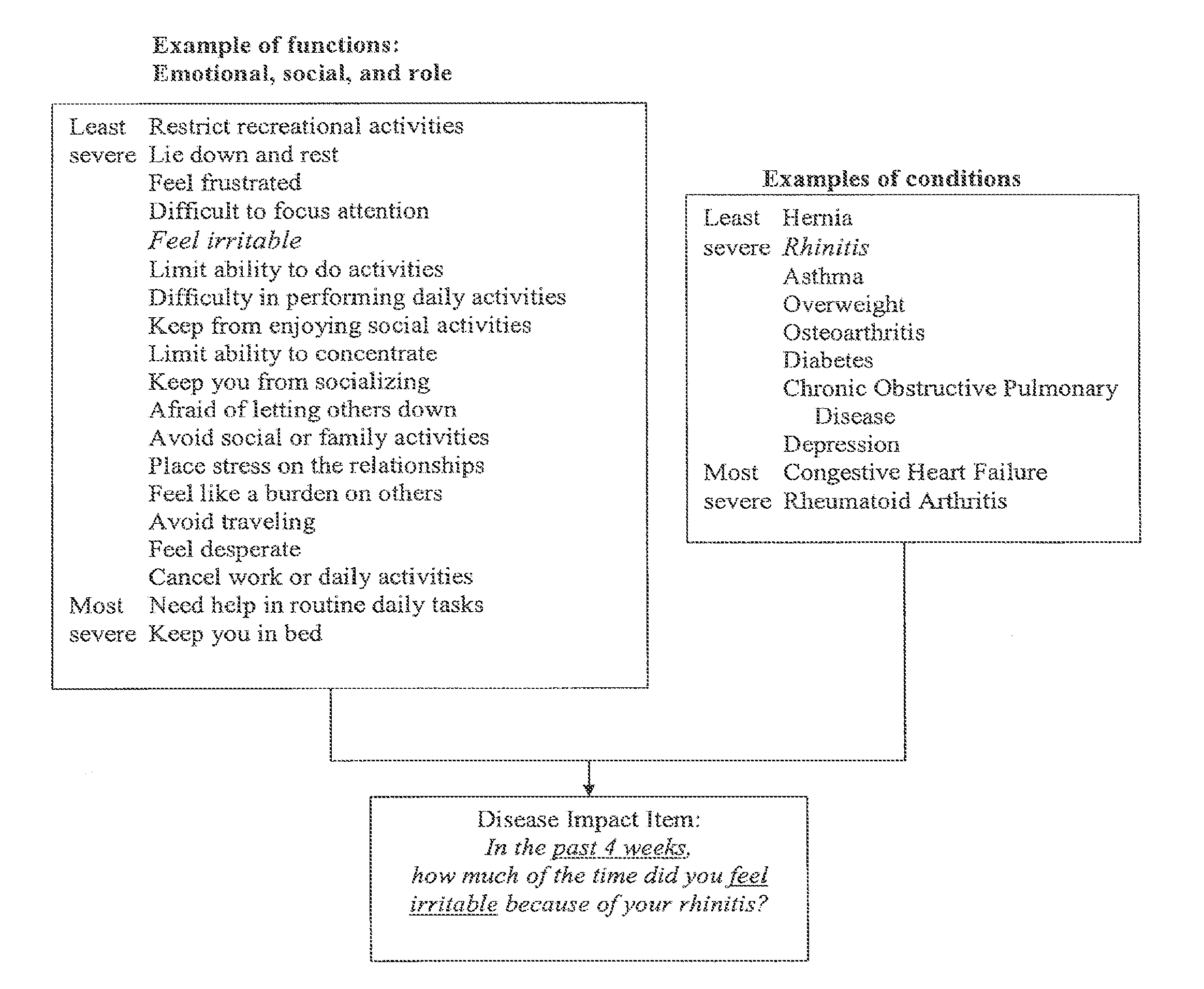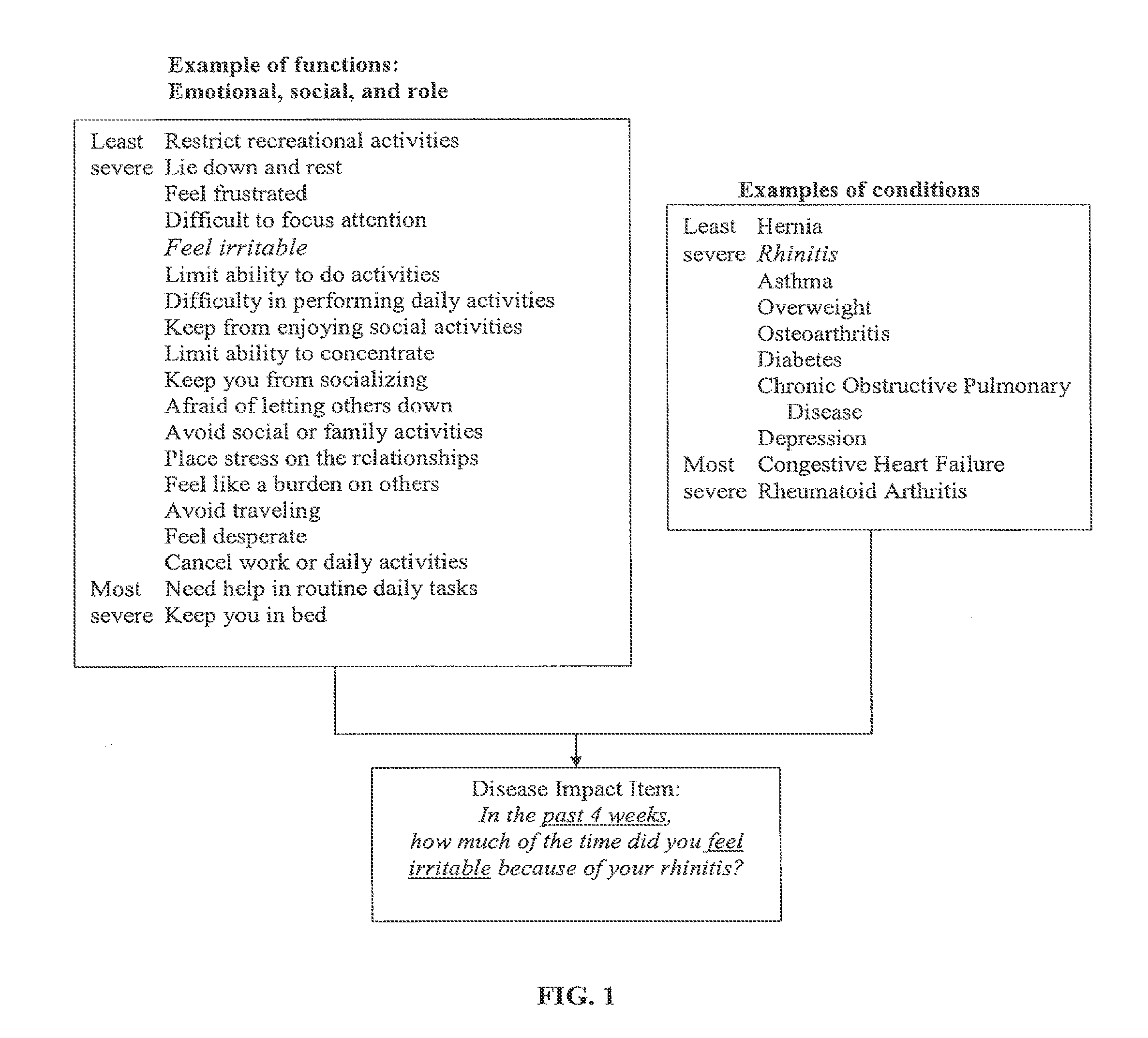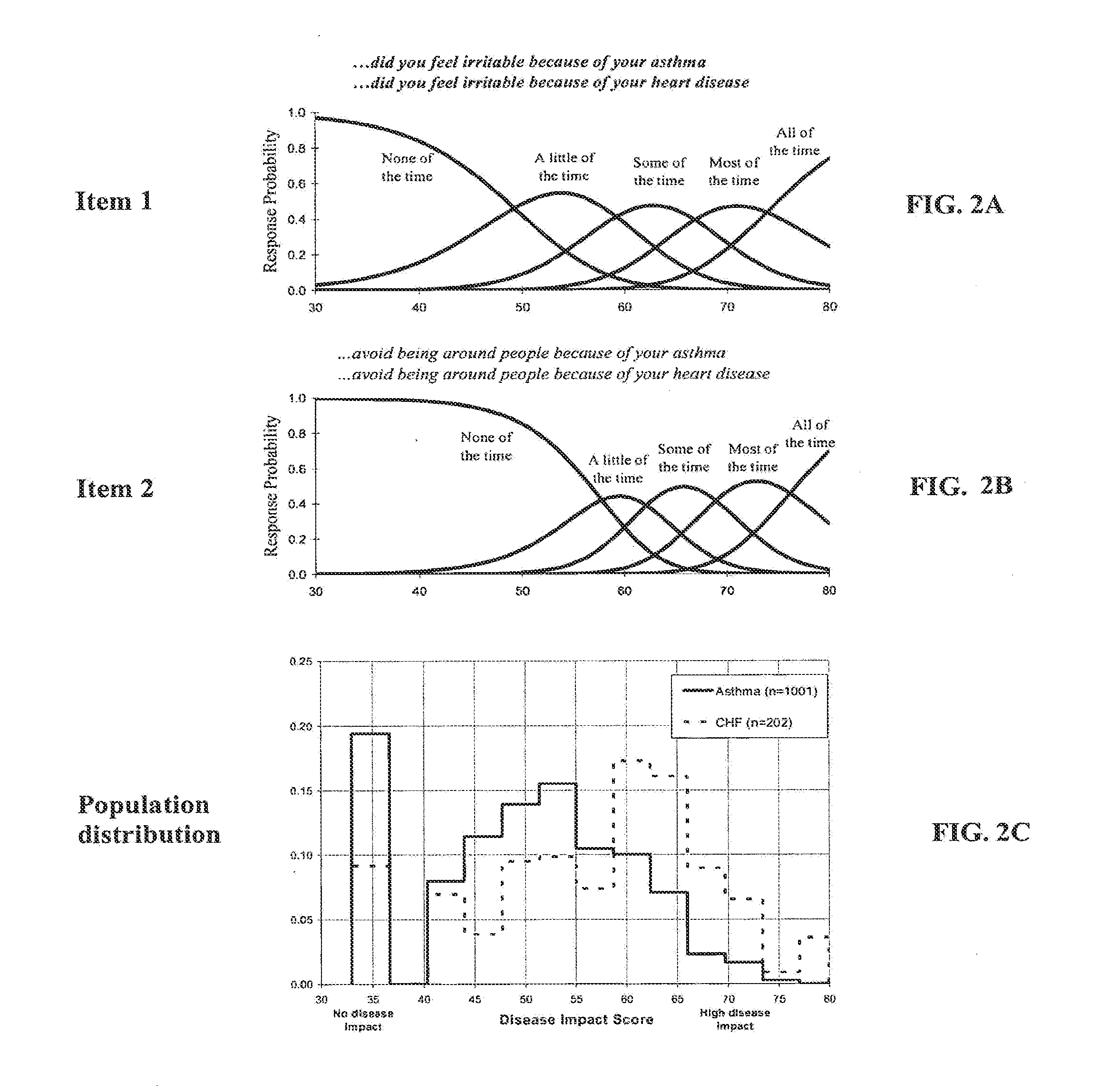Method, system and medium for assessing the impact of various ailments on health related quality of life
a technology of health related quality of life and assessing applied in the field of assessment techniques, can solve the problems of not having the ability to compare results across diseases, no standardized common metric for comparing the impact of various ailments, and difficult to build a body, so as to reduce the burden of respondent, reduce data collection costs, and improve the sensitivity and specificity of disease-specific questionnaires.
- Summary
- Abstract
- Description
- Claims
- Application Information
AI Technical Summary
Benefits of technology
Problems solved by technology
Method used
Image
Examples
example 1
[0125]Secondary IRT analyses of data for the SF-36 Health Survey and other questionnaires measuring the same HRQOL concepts was conducted to explore the practical implications of IRT and CAT for clinical research and practice.
[0126]Questionnaires self-administered by chronically ill patients (N=2,753) participating in the Medical Outcomes Study (MOS) were reanalyzed (Stewart & Ware, Jr., 1992; Tarlov A R, Ware J E, Jr., Greenfield S, Nelson E C, Perrin E, & Zubkoff M (1989). The Medical Outcomes Study. An application of methods for monitoring the results of medical care. JAMA, 262, 925-930, which is incorporated by reference in its entirety). The potential practical implications of IRT models and CAT-based assessments were clearly apparent from analyses where CAT was simulated using real data from people who answered all items in the item bank (Ware J E, Jr., Bjorner J B, & Kosinski M (1999). Dynamic Health Assessment: The Search for More Practical and More Precise Outcome Measures....
example 2
[0128]The first fully functioning CAT for medical outcomes was the DYNHA-HIT (Ware J E, Jr., Bjorner J B, & Kosinski M (2000). Practical implications of item response theory and computerized adaptive testing: a brief summary of ongoing studies of widely used headache impact scales. Med. Care, 38, 1173-1182, which is incorporated by reference in its entirety). This work was initiated by a re-analysis of data from three clinical trials of migraine treatment showing that IRT analysis could successfully be applied to a traditional HRQOL tool (Bjorner et al., 2003b) and that CAT-based scores were as precise or more precise than scores based on traditional tools and methods in evaluating treatment outcome (Kosinski M, Bjorner J B, Ware J E, Jr., Batenhorst A, & Cady R K (2003b). The responsiveness of headache impact scales scored using ‘classical’ and ‘modern’ psychometric methods: a re-analysis of three clinical trials. Qual Life Res, 12, 903-912, which is incorporated by reference in it...
example 3
[0133]Based on the results for headache impact as described supra, a study was conducted to investigate whether the scaling of indicators of functional health and well-being impacted by disease would be stable across disease conditions. If the scaling is stable (reflected in stable IRT item parameters across disease groups), the items have the same relative position on a “ruler” of disease impact regardless of disease. In general, this has been the case for the diseases in which the full set of indicators were tested to date: Rhinitis, Asthma, Osteoarthritis, Rheumatoid Arthritis, and Congestive Heart Failure. However, indicators that directly reflected the mechanism of some disease (e.g., questions directly about symptoms) functioned differently for these diseases and were, therefore, excluded. Based on these results, a bank of 37 indicators was constructed with stable scaling over the conditions evaluated. Further, based on responses to a smaller number of items the impact of 43 d...
PUM
 Login to View More
Login to View More Abstract
Description
Claims
Application Information
 Login to View More
Login to View More - R&D
- Intellectual Property
- Life Sciences
- Materials
- Tech Scout
- Unparalleled Data Quality
- Higher Quality Content
- 60% Fewer Hallucinations
Browse by: Latest US Patents, China's latest patents, Technical Efficacy Thesaurus, Application Domain, Technology Topic, Popular Technical Reports.
© 2025 PatSnap. All rights reserved.Legal|Privacy policy|Modern Slavery Act Transparency Statement|Sitemap|About US| Contact US: help@patsnap.com



